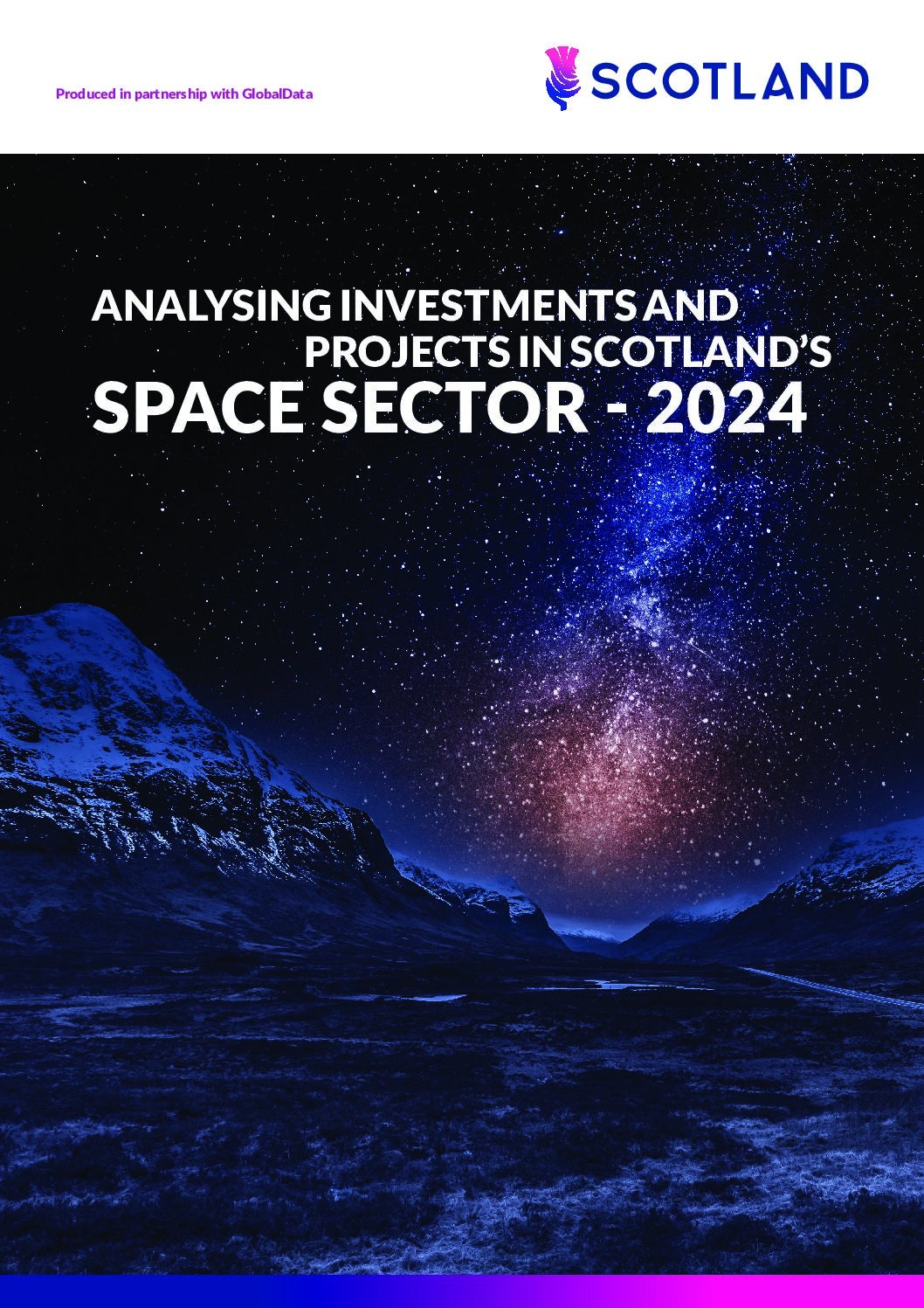
Scotland’s space sector is growing faster than anywhere in Europe and now hosts more than 130 space companies, with many of these international businesses.
The Scottish space sector is predicted to reach a value of £4bn by 2030, aided by the UK Space Agency working with the Scottish Government to support vertical and horizontal launch spaceports across Scotland.

And the current trend of developing ‘mega-constellation’ satellites is experiencing significant activity in Scotland, utilising hundreds, or sometimes thousands, of small, low-cost satellites in low-earth orbit to deliver broadband data services across the planet.
Essential to the development of mega-constellation satellite systems is ground-based infrastructure and data processing. This is where Celestia UK comes in. Part of the Celestia Technologies Group, a pan-European network of SMEs specialising in the development of high technology products, Celestia UK has recognised expertise in antenna, radio frequency and digital signal processing technologies. The business has two sites in Edinburgh in the Heriot-Watt University Research Park, and an additional site in Oxfordshire.
“We produce what’s called electronic scanning antennas,” says Malachy Devlin, CEO at Celestia UK. “Instead of a mechanical dish, we have a non-moving box that moves the beam electronically with no moving parts.”
Whereas a single receiving dish can only track one satellite at a time and is typically a slow process, Celestia’s technology ‘ESCAN’ can track dozens of satellites at once. “What we do is very agile. Our technology can be pointed at one part of the sky, and then follow a satellite. And instantaneously, we can be back at the start, or we can pick up any satellite within view,” adds Devlin.
Technologies to reduce the costs of satellites
The key for constellation satellites is that in a low-earth orbit, there are very few signal delays with the data. “The lower latency is really important,” notes Devlin. “For Starlink, for example, that’s one of their key messages about reducing time, so it gets closer to the broadband you would have at home. But the other point of a low-earth orbit is it’s cheaper to put something up there. It’s also cheaper to make the satellite as well because there’s less radiation than in geostationary orbits.
“That’s why you get this whole new space industry where people are doing cube sats, for example. And it’s using more commercial parts, rather than special space parts, which puts an order of magnitude on the economy of scale, because they can make them cheaper. You can put up 100 low-earth orbit satellites for the same price you would put one geostationary orbit satellite. Also, you’re reducing risk, because if you lose one satellite, you’ve still got 99 left.”
Celestia uses frequencies much higher than is standard. “It’s what’s called the K-band,” explains Devlin. “It gives you much higher bandwidth to transfer data to and from satellites. And the other thing is this multi-beam aspect. We can track tens of satellites simultaneously, in a unit that’s maybe two metres by two metres.”
Devlin points out the advantages that such a small unit can have. Traditionally, you need fields full of satellite dishes, somewhere remote, that you have to run power and fibre connections back to your data centre from, which in turn adds further latency to the signal. “What we can do is take all that, put it in this box and you can actually put it on the roof of your building. Straightaway, that’s reduced costs,” Devlin explains.
Investing in the space sector in Scotland
When it came to choosing Scotland as its research and development (R&D) and manufacturing base, Devlin says the decision was not only based on economic grounds, but also on the best place for Celestia to grow and access talent with the right skills.
“We are pushing at the technical limits and being able to tie in with the University and Research Park was important as well,” says Devlin. “There’s a research park at Heriot-Watt University and it was an opportunity to be somewhere close to the university, build up that relationship, and get a strong link. In fact, the university supported us with a co-working area. But we’ve got two premises from the research park as well. So, we’ve got one where we’ve got our design capability. And then there’s another where we do our assembly and testing of the systems.
“It’s that access to talent and also Scottish Enterprise and Scottish Development International – the way they engage and how they engage is a very good experience. They try to understand what we’re working on. Looking at what support there is – that’s where we got some financial support for R&D.”
Based on Celestia’s commitment to operations in Scotland, the company received a £2.5m R&D award from Scottish Enterprise in 2020 – creating 18 new jobs. And Devlin says that the support Celestia received is ongoing. “What’s really good is they’re still there, and we have regular interaction,” adds Devlin. “They want to understand where you’re going, and they want to see where they can help you grow.”
Growing a space business in Scotland
For Celestia, Scotland is an important location for future growth. “We’ve been doing a lot of development on the technology and going through a stage of proving it,” says Devlin. “Now, what we’re doing is moving straight to manufacture production. Focussing on the shipping product, looking at expanding our manufacturing capability.”
Celestia is also figuring out the next generation of satellite communication, adds Devlin. “How do we maximise the bandwidth? So, there are increasing frequencies to get more bandwidth. When you talk about communications, as we get more users on these networks, how do we push it harder? We’ll be looking at that. Also, we’ve got work doing the same thing, but for aircraft. Not just on top of a data centre but in a situation where you’ve got moving vehicles such as aircraft. Now, it’s a small mechanical dish that sits in the plane, but we can do that electronically and do multiple satellites, as well with a lower profile.” This reduces air resistance and cuts costs for the airline, points out Devlin.
Scotland holds one more key advantage for Celestia, says Devlin, which is being part of a ‘space community’. “People can learn from each other – whether that’s regulation, legal, supply chain, talent acquisition,” adds Devlin. “Scotland is big enough to get a lot done, but still small enough to feel like a community.”



